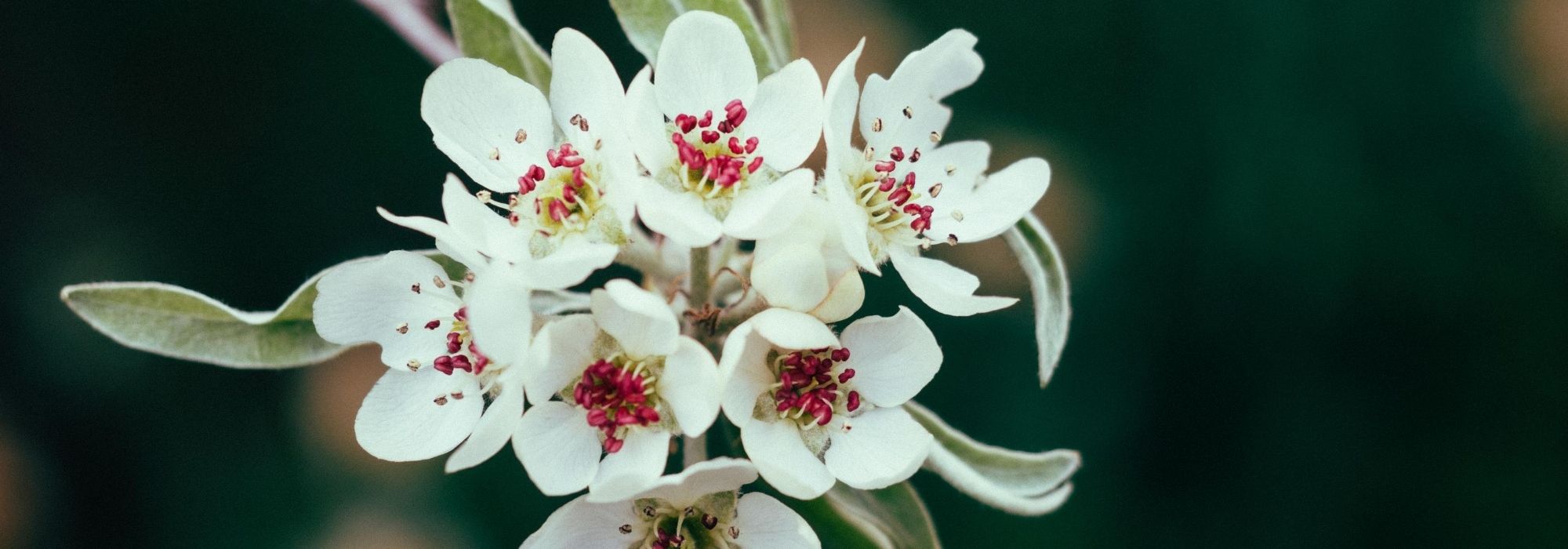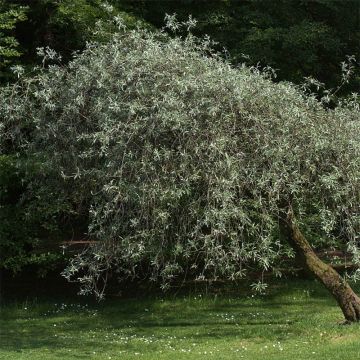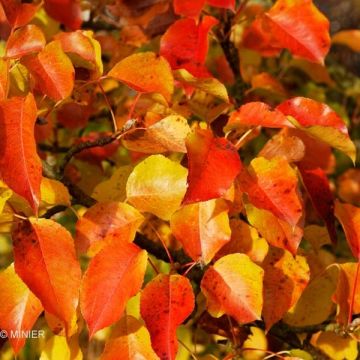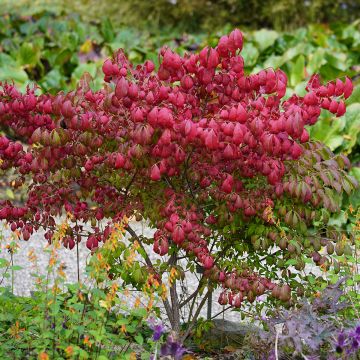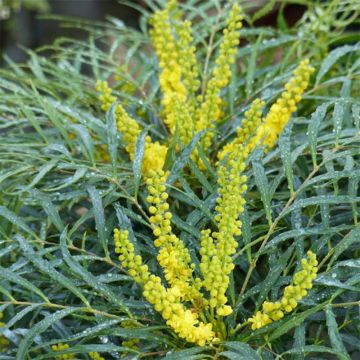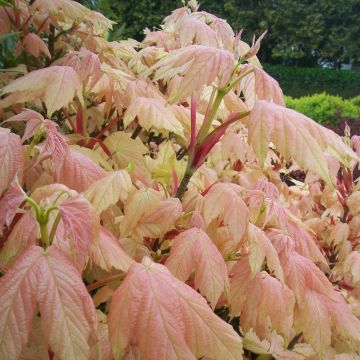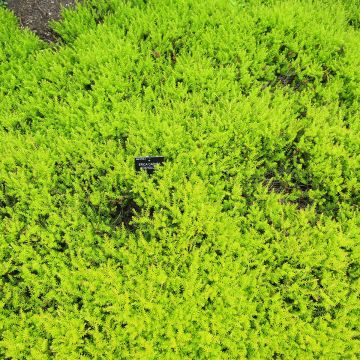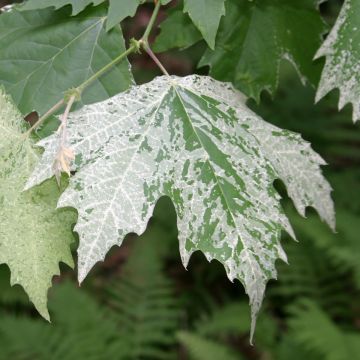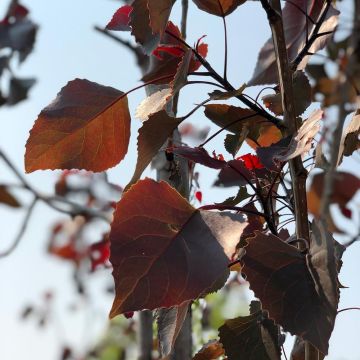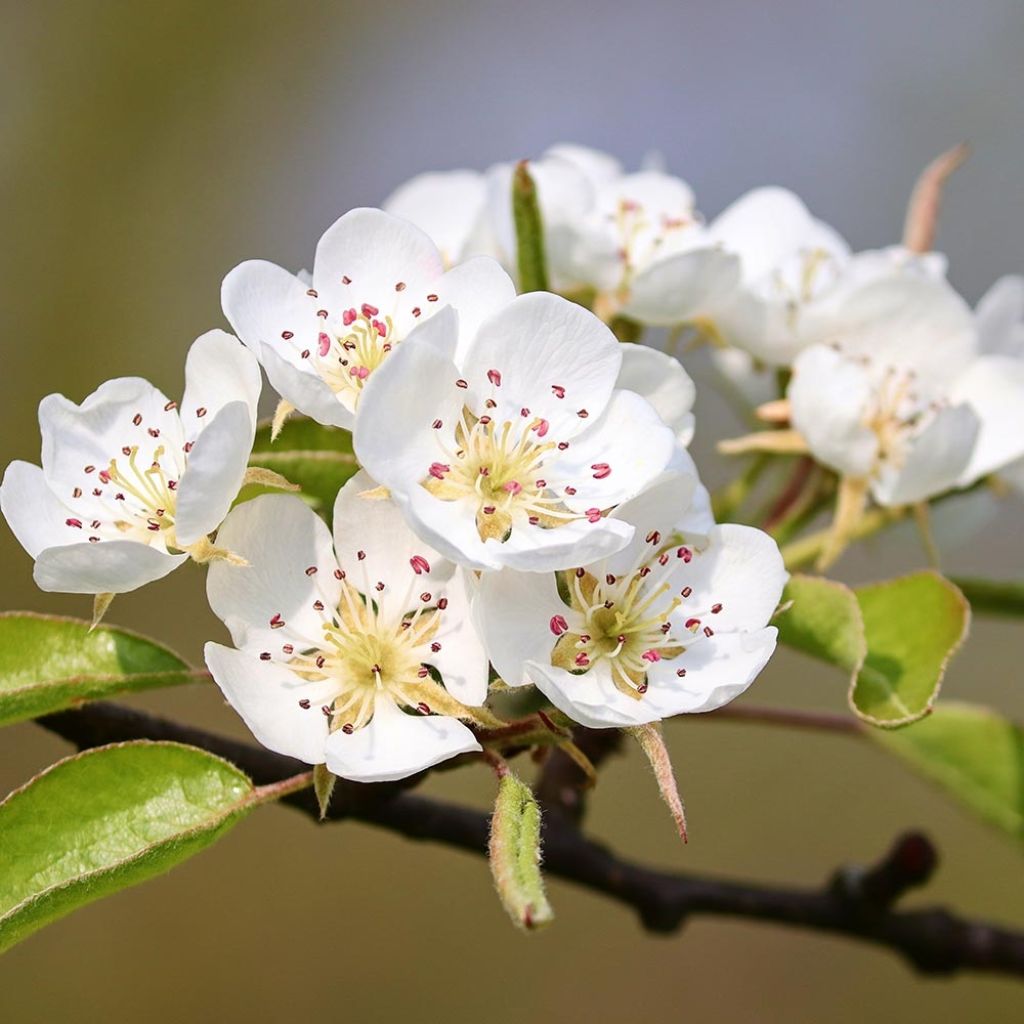

Pyrus pyraster
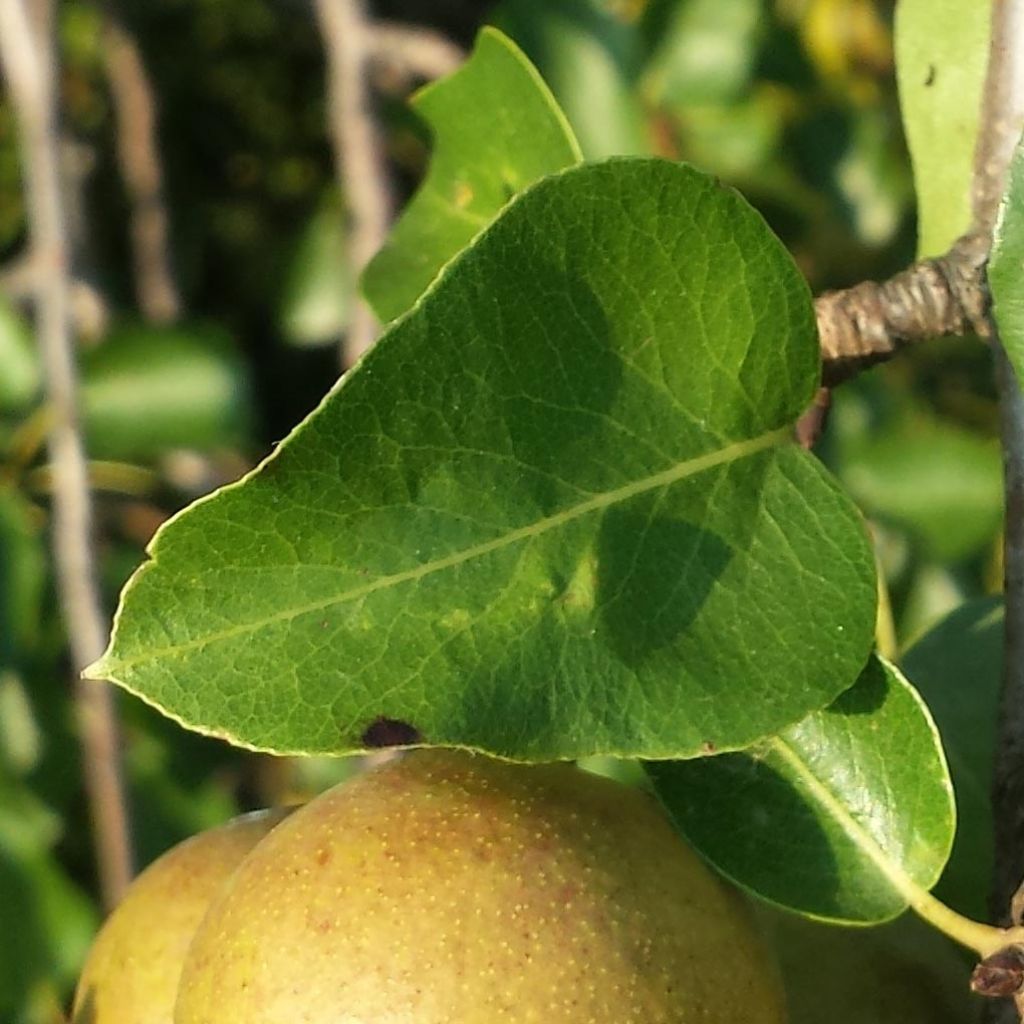

Pyrus pyraster
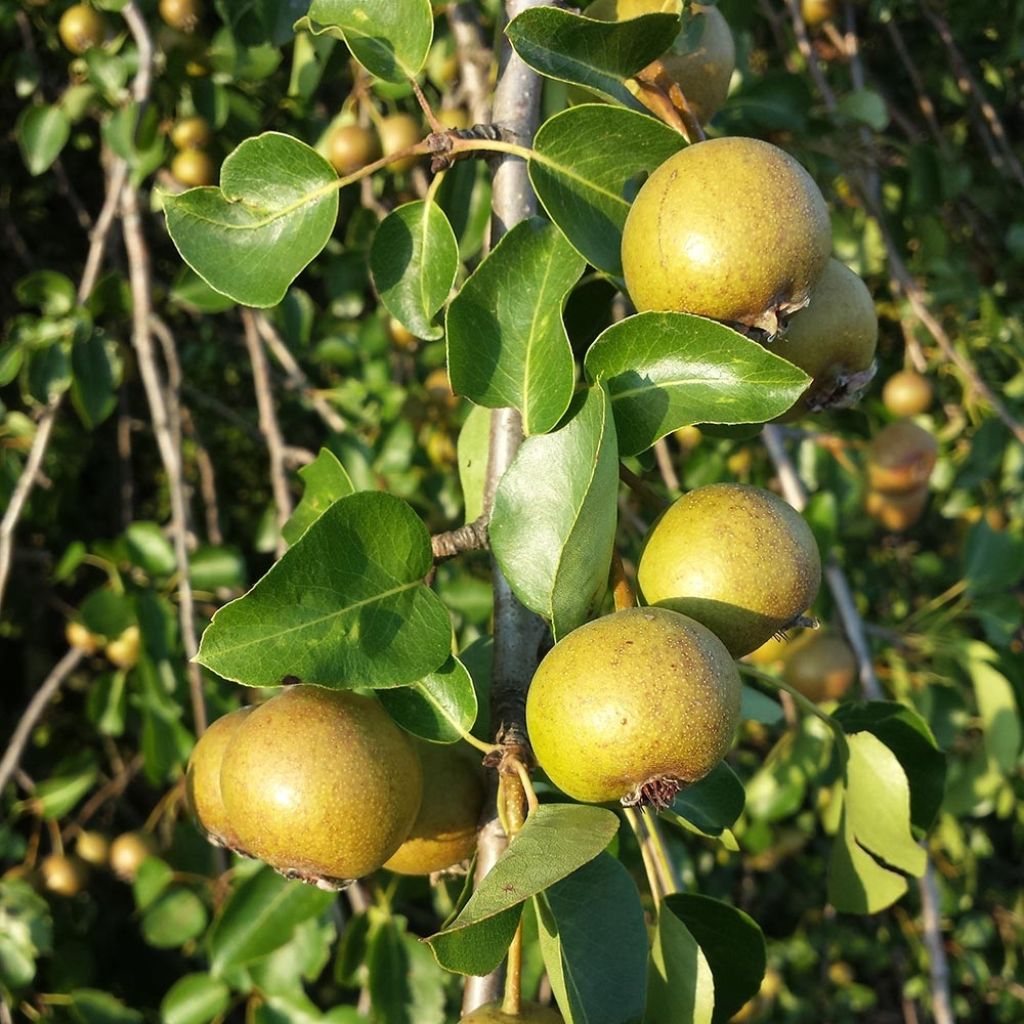

Pyrus pyraster
Pyrus pyraster
Pyrus pyraster
Poirier sauvage, Aigrin, Blossonier
Very good quality upon receipt, it is in good health.
Maxime, 17/12/2020
Special offer!
Receive a €20 voucher for any order over €90 (excluding delivery costs, credit notes, and plastic-free options)!
1- Add your favorite plants to your cart.
2- Once you have reached €90, confirm your order (you can even choose the delivery date!).
3- As soon as your order is shipped, you will receive an email containing your voucher code, valid for 3 months (90 days).
Your voucher is unique and can only be used once, for any order with a minimum value of €20, excluding delivery costs.
Can be combined with other current offers, non-divisible and non-refundable.
Home or relay delivery (depending on size and destination)
Schedule delivery date,
and select date in basket
This plant carries a 24 months recovery warranty
More information
We guarantee the quality of our plants for a full growing cycle, and will replace at our expense any plant that fails to recover under normal climatic and planting conditions.

Does this plant fit my garden?
Set up your Plantfit profile →
Description
Pyrus pyraster or Wild pear tree is a fairly rare wild species, closely related to the common pear tree. This medium-sized tree forms a rather irregular, sometimes asymmetrical, pyramid-shaped crown. It has a very slow growth and exceptional longevity, reaching approximately 15 m (49ft) in height at maturity. In early spring, it is adorned with a charming white flowers, dotted with red stamens. The flowers are followed by small, round, yellow-green pears. Being a light-demanding species, the wild pear tree is preferably planted in isolation, in a medium to large-sized garden. It is also interesting to grow in an orchard, to help with pollination of other trees. It is not picky about soil type, tolerating drought thanks to its deep root system, although it will grow more easily in rich and moist soils, in sheltered areas in regions with harsh winters.
The wild pear tree, like other botanical species of the genus Pyrus, belongs to the large Rosaceae family. It naturally grows in the temperate zones of central and western Europe, in places where competition from other trees and shrubs is not too severe. It prefers loamy, deep, loose, and fresh soils, as well as sunny exposures. Its habit is generally pyramidal, irregular to asymmetrical (often "flag-like"). It usually reaches between 12 and 15 m (39 and 49ft) in height and 4 to 7 m (13 to 23ft) in width. Its branches are thorny, covered with a brownish-gray bark. Its precious wood, heavy and dense, has a beautiful reddish color. It is highly prized for woodworking and sculpture.
Flowering occurs before the leaves emerge, in April-May, in the form of corymbs of single, white flowers with red stamens, measuring between 2 and 3 cm (1in) in diameter. The flowering period is followed by the formation of numerous small, round pears, less than 3.5 cm (1in) in diameter. Ripe in late summer, they are yellow-green to brown. They have a bitter taste and a granular texture. They are mainly used to make delicious jellies or a famous pear cider called Poiré. The leaves, about 5 to 7 cm (2 to 3in) long, are ovate, alternate, glabrous, finely dentate, and carried on long petioles. Young leaves are slightly pubescent. The shiny dark green foliage is deciduous and becomes intensely red in autumn.
Hardy, Pyrus pyraster thrives in sunny locations and can withstand temperatures down to -20 °C (1°F). Plant it in well-drained soil. It tolerates dry conditions as well as lime-rich soils. It is a good cross-pollinator for other early-flowering fruit pear trees. Its beautiful spring flowering, decorative small fruits in summer, and fiery foliage in autumn make it attractive almost all year round. It will feel at home in a medium to large-sized garden, in a natural hedge, accompanying, for example, large garden roses or climbing roses trained as bushes, evergreen Viburnums, and lilacs. When space allows, wild pear trees planted in a large hedge on a slope bordering a sunken path create a rather magical scene not only in spring but also in autumn, due to their sumptuous colours at the end of the season.
Pyrus pyraster in pictures
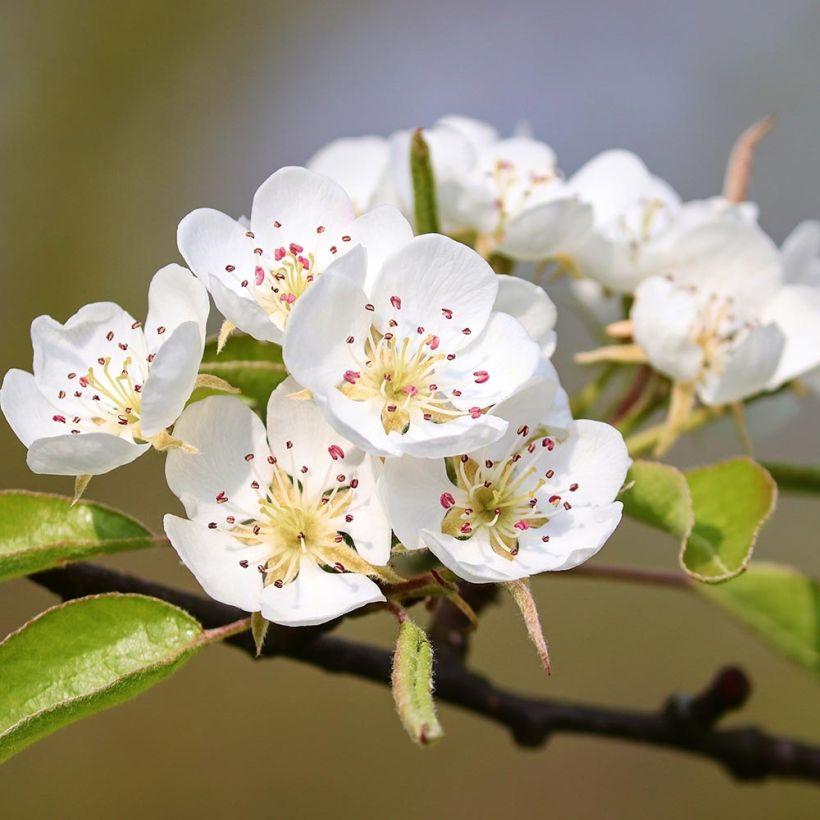

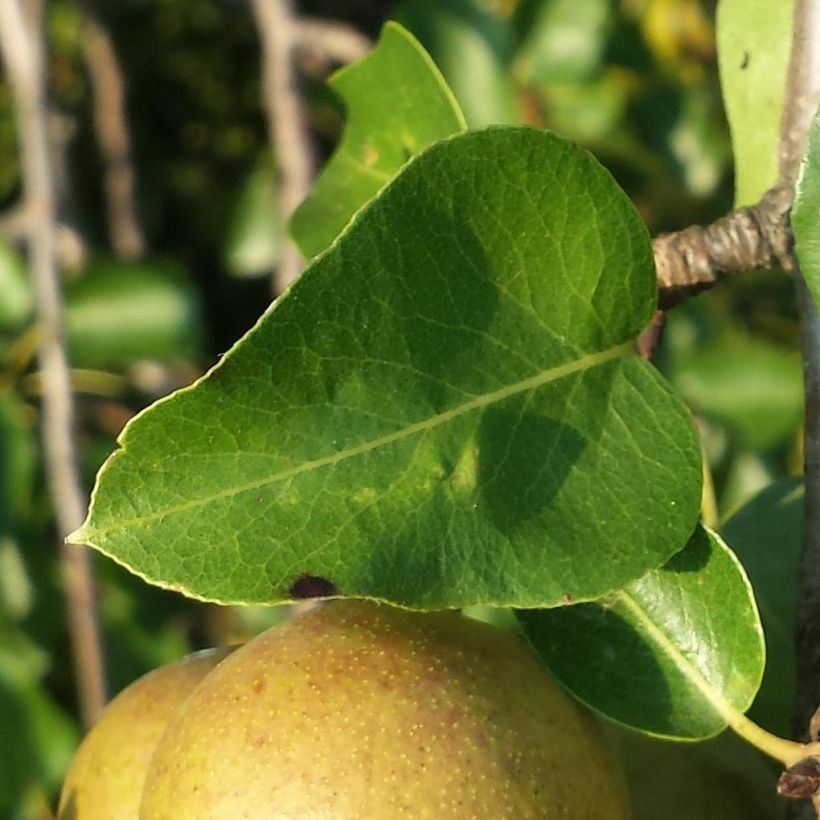

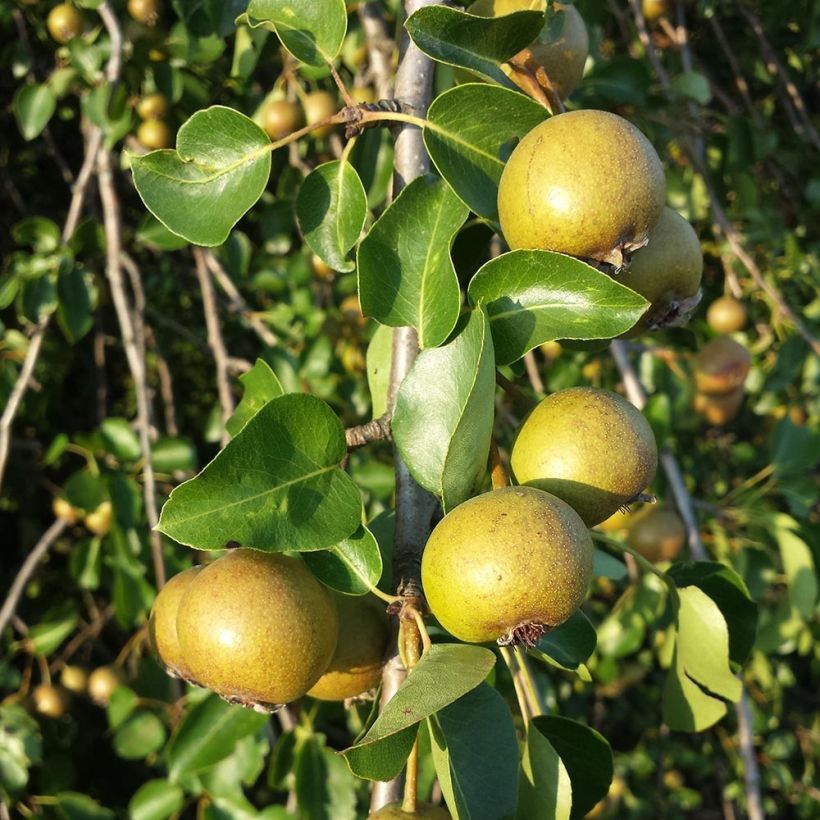

Plant habit
Flowering
Foliage
Botanical data
Pyrus
pyraster
Rosaceae
Poirier sauvage, Aigrin, Blossonier
Central Europe
Other Pyrus - Ornemental Pear tree
View all →Planting and care
Pyrus pyraster thrives in sunny locations. Plant it in well-drained soil, even if it is poor and chalky. A little moisture won't harm it as long as the water doesn't stagnate in winter. Plant it preferably in October or November, by creating a large planting hole, amend with hoof & horn or dried blood, establish good drainage and then close the hole with a mixture of one-third garden soil and well-decomposed compost or peat, leaving the root collar exposed.
Planting period
Intended location
Care
Planting & care advice
-
, onOrder confirmed
Reply from on Promesse de fleurs
Similar products
Haven't found what you were looking for?
Hardiness is the lowest winter temperature a plant can endure without suffering serious damage or even dying. However, hardiness is affected by location (a sheltered area, such as a patio), protection (winter cover) and soil type (hardiness is improved by well-drained soil).

Photo Sharing Terms & Conditions
In order to encourage gardeners to interact and share their experiences, Promesse de fleurs offers various media enabling content to be uploaded onto its Site - in particular via the ‘Photo sharing’ module.
The User agrees to refrain from:
- Posting any content that is illegal, prejudicial, insulting, racist, inciteful to hatred, revisionist, contrary to public decency, that infringes on privacy or on the privacy rights of third parties, in particular the publicity rights of persons and goods, intellectual property rights, or the right to privacy.
- Submitting content on behalf of a third party;
- Impersonate the identity of a third party and/or publish any personal information about a third party;
In general, the User undertakes to refrain from any unethical behaviour.
All Content (in particular text, comments, files, images, photos, videos, creative works, etc.), which may be subject to property or intellectual property rights, image or other private rights, shall remain the property of the User, subject to the limited rights granted by the terms of the licence granted by Promesse de fleurs as stated below. Users are at liberty to publish or not to publish such Content on the Site, notably via the ‘Photo Sharing’ facility, and accept that this Content shall be made public and freely accessible, notably on the Internet.
Users further acknowledge, undertake to have ,and guarantee that they hold all necessary rights and permissions to publish such material on the Site, in particular with regard to the legislation in force pertaining to any privacy, property, intellectual property, image, or contractual rights, or rights of any other nature. By publishing such Content on the Site, Users acknowledge accepting full liability as publishers of the Content within the meaning of the law, and grant Promesse de fleurs, free of charge, an inclusive, worldwide licence for the said Content for the entire duration of its publication, including all reproduction, representation, up/downloading, displaying, performing, transmission, and storage rights.
Users also grant permission for their name to be linked to the Content and accept that this link may not always be made available.
By engaging in posting material, Users consent to their Content becoming automatically accessible on the Internet, in particular on other sites and/or blogs and/or web pages of the Promesse de fleurs site, including in particular social pages and the Promesse de fleurs catalogue.
Users may secure the removal of entrusted content free of charge by issuing a simple request via our contact form.
The flowering period indicated on our website applies to countries and regions located in USDA zone 8 (France, the United Kingdom, Ireland, the Netherlands, etc.)
It will vary according to where you live:
- In zones 9 to 10 (Italy, Spain, Greece, etc.), flowering will occur about 2 to 4 weeks earlier.
- In zones 6 to 7 (Germany, Poland, Slovenia, and lower mountainous regions), flowering will be delayed by 2 to 3 weeks.
- In zone 5 (Central Europe, Scandinavia), blooming will be delayed by 3 to 5 weeks.
In temperate climates, pruning of spring-flowering shrubs (forsythia, spireas, etc.) should be done just after flowering.
Pruning of summer-flowering shrubs (Indian Lilac, Perovskia, etc.) can be done in winter or spring.
In cold regions as well as with frost-sensitive plants, avoid pruning too early when severe frosts may still occur.
The planting period indicated on our website applies to countries and regions located in USDA zone 8 (France, United Kingdom, Ireland, Netherlands).
It will vary according to where you live:
- In Mediterranean zones (Marseille, Madrid, Milan, etc.), autumn and winter are the best planting periods.
- In continental zones (Strasbourg, Munich, Vienna, etc.), delay planting by 2 to 3 weeks in spring and bring it forward by 2 to 4 weeks in autumn.
- In mountainous regions (the Alps, Pyrenees, Carpathians, etc.), it is best to plant in late spring (May-June) or late summer (August-September).
The harvesting period indicated on our website applies to countries and regions in USDA zone 8 (France, England, Ireland, the Netherlands).
In colder areas (Scandinavia, Poland, Austria...) fruit and vegetable harvests are likely to be delayed by 3-4 weeks.
In warmer areas (Italy, Spain, Greece, etc.), harvesting will probably take place earlier, depending on weather conditions.
The sowing periods indicated on our website apply to countries and regions within USDA Zone 8 (France, UK, Ireland, Netherlands).
In colder areas (Scandinavia, Poland, Austria...), delay any outdoor sowing by 3-4 weeks, or sow under glass.
In warmer climes (Italy, Spain, Greece, etc.), bring outdoor sowing forward by a few weeks.






























